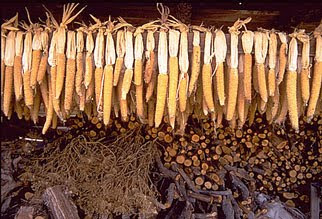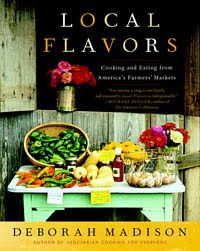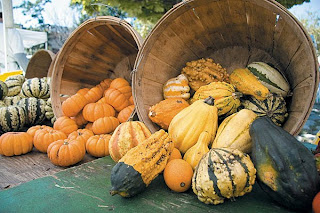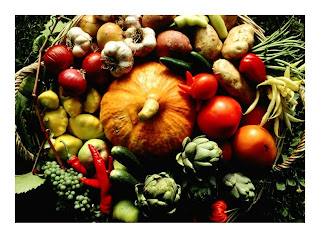
Under my sidebar section called "Foodies" there is a photo of a pan of
posole cooking on my
stovetop last week.
Posole is a sort of soup, or stew, of dried corn kernels, locally known as
chicos, meat, onions, garlic, red or green
chile, various herbs and spices. Just for fun I googled this dish today, and found interesting, and well-documented, historical facts about its origins. According to this
Wikipedia article, they lie in ancient and startling Mexican (Aztec) religious tradition. The meat with which the corn was first cooked was human, from the bodies of prisoners of war after their hearts had been removed in ritual sacrifice, and the
posole was eaten ceremonially by the entire community in a sort of special-occasion communion.
Today it is still a special-occasion food, eaten during the winter holidays, a dish of dried corn kernels (though many recipes call for the much blander canned hominy) locally known as
chicos, red or green
chile, onions, garlic and various spices. Since the arrival of the Spanish in Mexico in the fifteen hundreds, cannibalism was discontinued, officially anyway, and the traditional meat cooked into it is pork, although it is quite delicious made with chicken or turkey as well. I make it with turkey presently, though I hope we will eventually wean ourselves off even poultry.
We had lunch at Garcia's Kitchen the weekend before Christmas, where many customers were slurping down bowls of the traditional red
chile/pork meat
posole. This inspired me to go home and make a batch of green
chile/turkey sausage
posole for our friends who were to arrive that night, on their way to Santa Fe. I often use
Bueno's frozen corn kernels. I also like to use blue corn dried kernels when I have them, though they take a good deal longer to cook. I first boil the corn for an hour or so,
sauté chopped onion, minced garlic, and green
chiles and add them to the simmering
chicos. I add whatever stock, vegetable, chicken or turkey, I have on hand, cooked turkey meat,fresh cilantro, some mild red
chile powder, a pinch of dried cumin, then let it simmer for as long as it takes. It is a food that only improves with time and its own interaction. The longer the flavors blend and mingle, the better it gets. I serve it with a choice of toppings: sour cream, avocado, more cilantro, grated cheese.
I hope you can get past my historical notes on the origins of this delicious winter meal and give it a try yourselves. There are a ton of recipes for
Posole on the Internet, so just pick one that looks good and give it a try. Feel free to experiment, New Mexicans all have their own idiosyncratic recipes.
If you live where the basic ingredients of dried corn and
chiles are not readily available, you can find them at these websites and have them shipped to you: This one is in Idaho, strangely enough, but they have it all:
Purcell Mountain Farms. These folks have an Albuquerque address, so I assume that's where they are located:
New Mexico Connection. Their catalogue looks like a treasure. The Bueno Foods' site also has both ingredients and recipes. You don't have to use the pigs' feet. I promise.
 As we prepare to enter a new year, a new decade, many people are setting out their thoughts on the year and decade past. I have to agree with these words from one of my favorite news/opinion sites, Common Dreams, sent to me in a fund-raising email this morning:
As we prepare to enter a new year, a new decade, many people are setting out their thoughts on the year and decade past. I have to agree with these words from one of my favorite news/opinion sites, Common Dreams, sent to me in a fund-raising email this morning: 

























